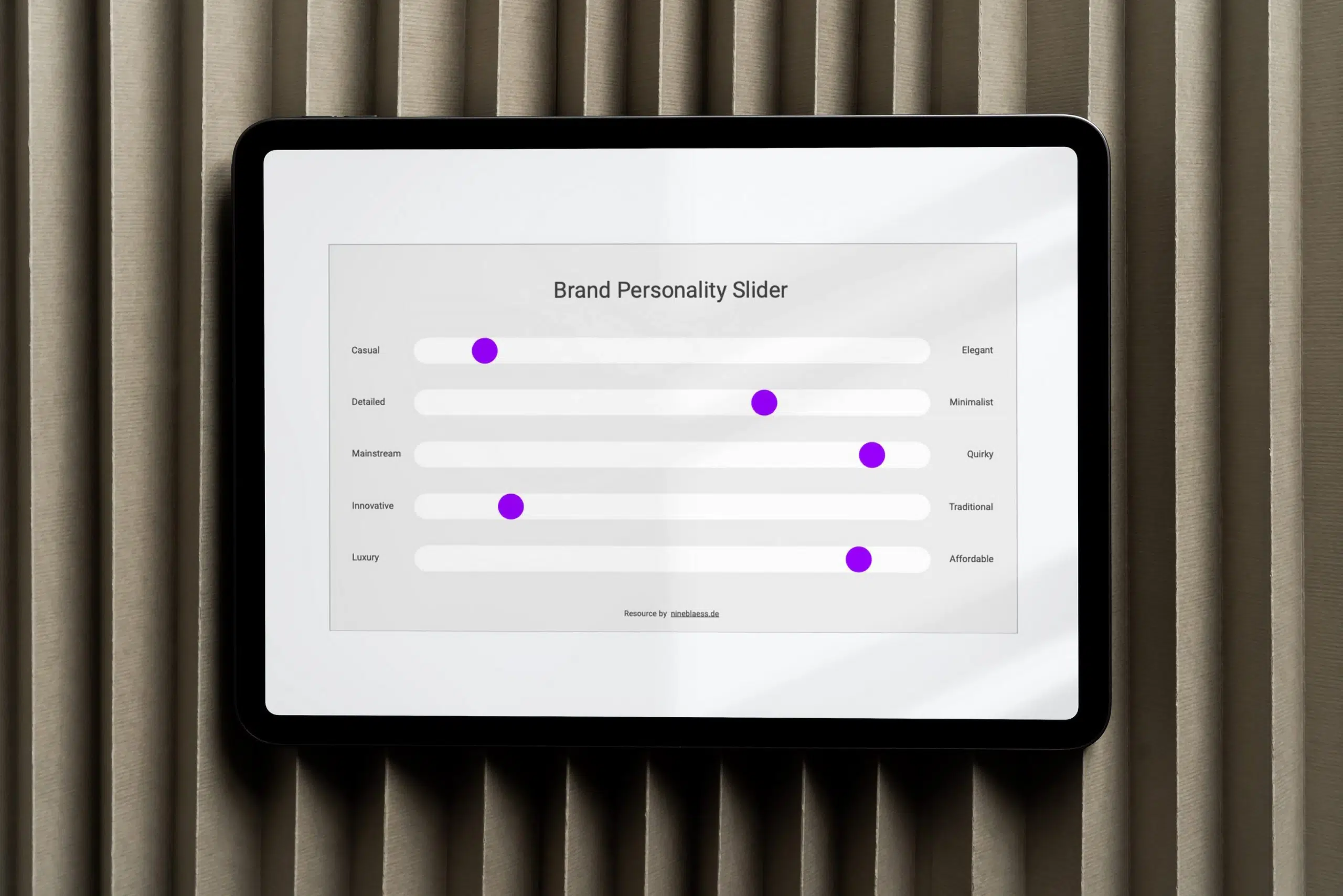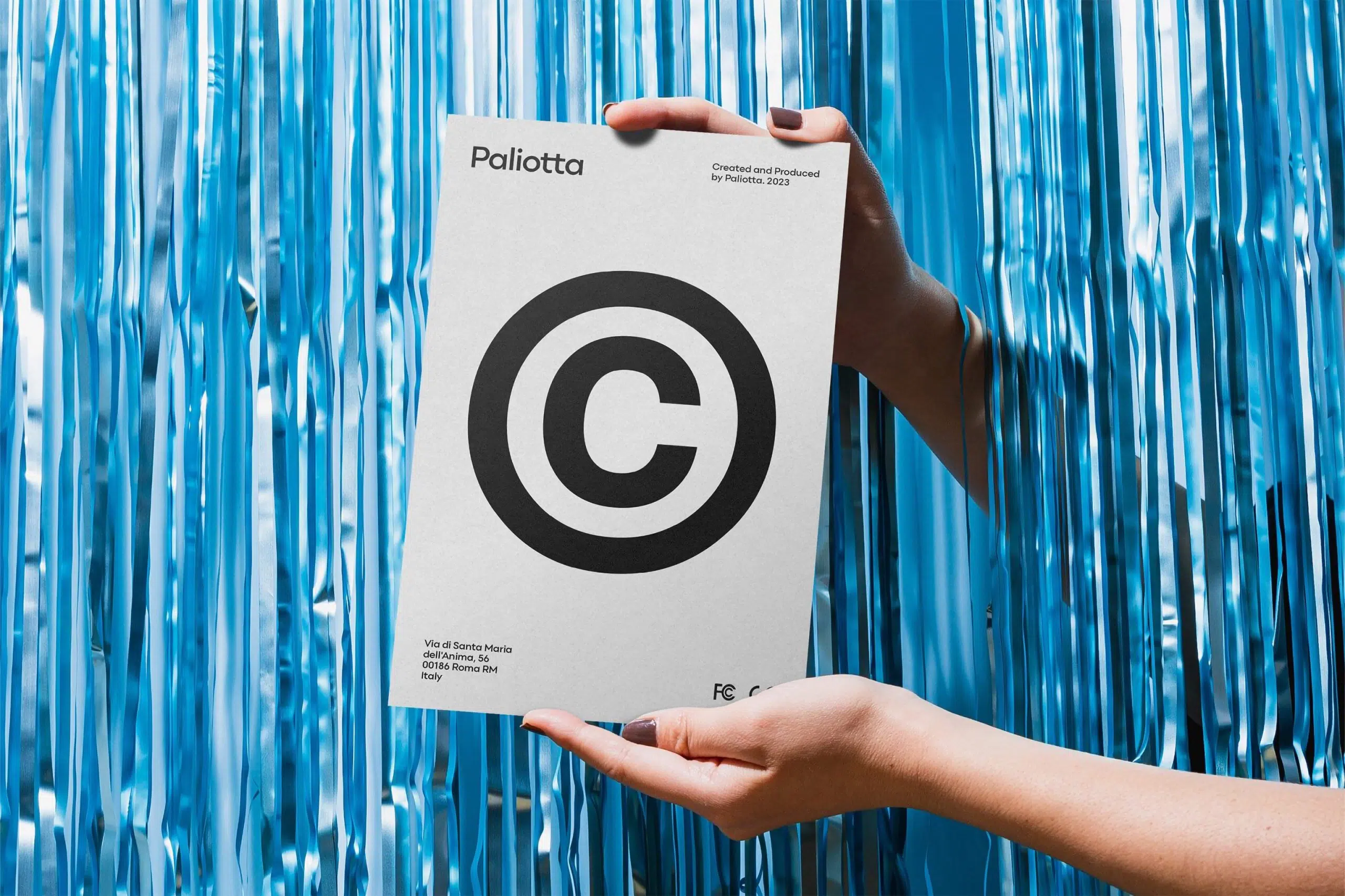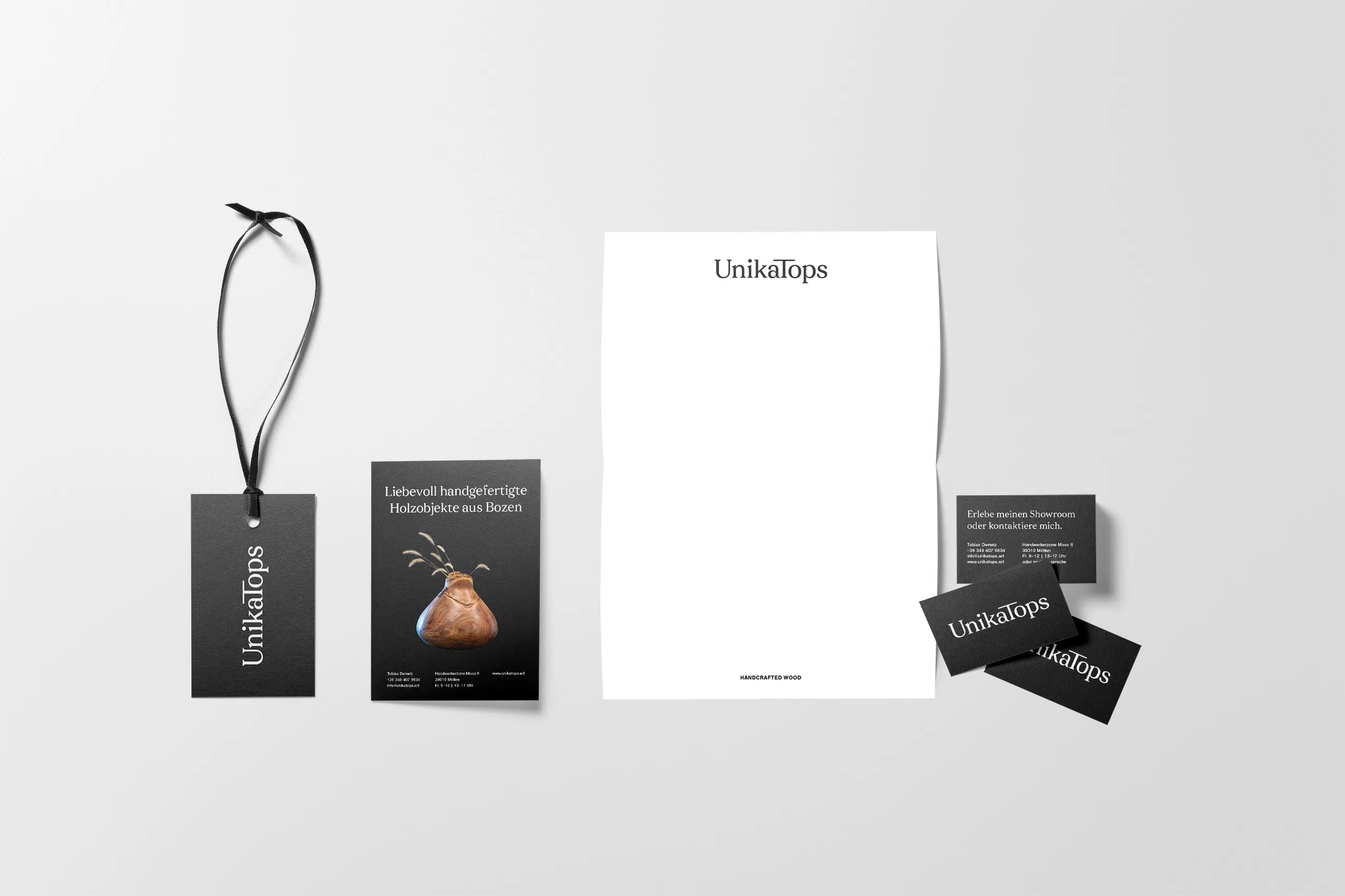In this article, we’ll take a deep dive into branding.
By the end of it, you’ll understand what branding is, how it came to be and how it’s done. We’ll also look at some real-world examples and future trends.
So, let’s get started.
History of branding
Branding may seem like a new trend, but its roots go back thousands of years. Let’s take a brief look at the origins of branding:
Ancient beginnings
Around 2,000 BC, farmers began to mark their livestock. They used methods such as hot iron burning or tattooing to easily identify their animals.
Print revolution
Gutenberg’s invention of letterpress printing in 1,454 significantly changed mass communication. It made it possible to print text for the first time.
Industrial revolution and visual branding
Branding had to adapt during the Industrial Revolution in the 18th and 19th centuries.
With mass production and increasing competition, companies had to find ways to stand out and appeal to a broader audience. It was during this time that the foundation for modern branding was laid.
Iconic logos, such as the AEG logo by Peter Behrens, were created during this time.
In addition, the invention of photography became a game-changer and expanded the possibilities for branding and advertising.
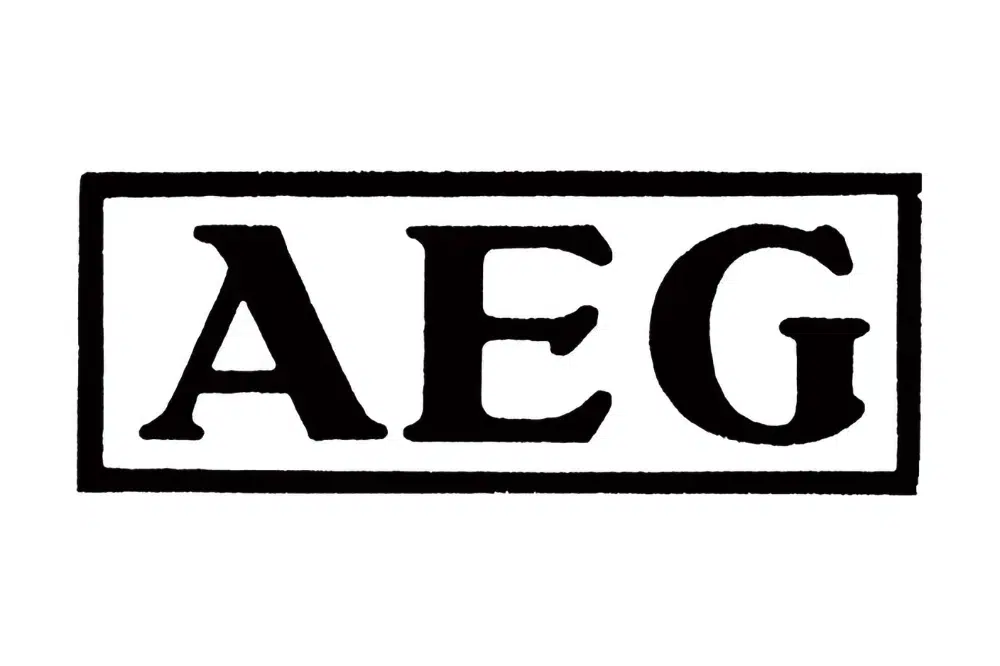
The 20th century branding boom
In the 20th Century, branding became an integral part of marketing.
Businesses could suddenly reach large audiences thanks to mass media, such as newspapers, magazines, radio, and television.
Famous designers such as Paul Rand and Saul Bass created iconic logos, including the timeless IBM emblem.
Then, in the early 1990s, the Internet emerged and significantly changed how companies could communicate with their audiences.
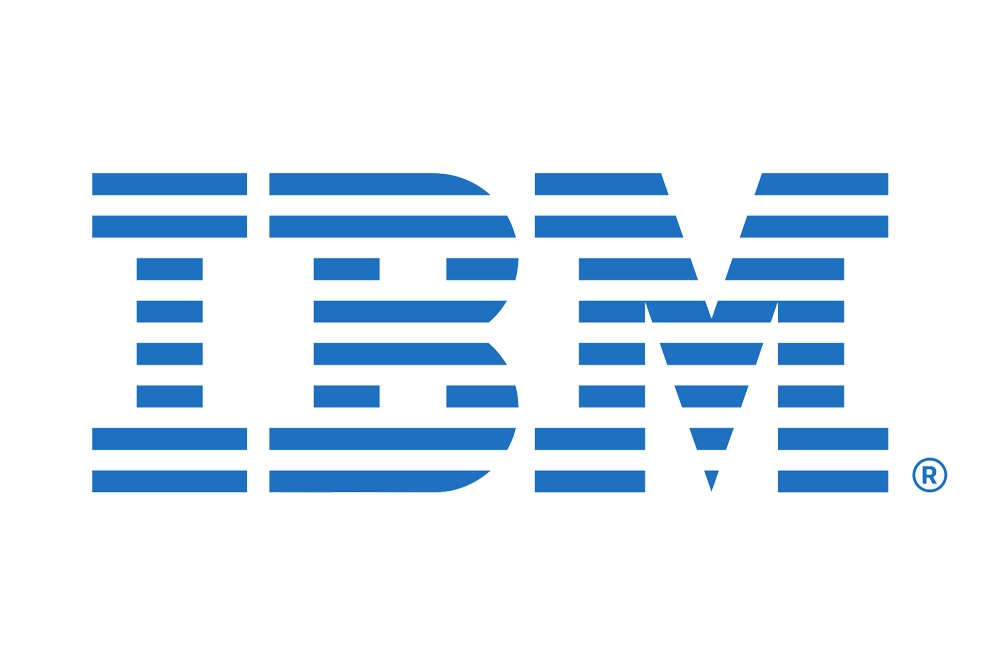
Contemporary branding
With the rise of digitalisation, branding has had to reinvent itself to capture people’s shorter attention spans.
The rise of social media, artificial intelligence, and augmented reality greatly impacts how branding evolves.
To stand out, a logo is no longer enough. Today, brands need to create immersive brand experiences and develop a holistic brand culture.
Moreover, it’s no longer just products and companies that need branding. Brands are ubiquitous. From celebrities to political parties—everyone is a brand.
Definitions
Now that we’ve talked about the history of branding let’s clarify what branding really means.
We all have a basic idea, but it can vary. To understand branding, let’s start with what a brand is.
What is a brand?
The term ‘brand’ means more than just a logo or a brand name. It represents the reputation that companies, individuals, products, or services build based on what people expect, remember, and associate with them—and how well these expectations are fulfilled.
It’s not only about the product or service; a strong brand influences how people perceive and connect with it.
It’s worth stressing that people are naturally drawn to brands that align with their own values and beliefs. They often choose particular brands to express themselves and display their desired image and personality.
Seth Godin, marketing expert and author, defines a brand as such:
A brand is a set of expectations, memories, stories, and relationships that, taken together, account for a consumer’s decision to choose one product or service over another.
What is branding?
‘Branding’ is the strategic process of creating and maintaining a brand.
It involves creating a unique brand personality, identity, values, and positioning and consistently communicating these elements in the form of brand images, messages, and experiences.
The ultimate goal of branding is to create a positive and lasting connection with the target audience, fostering their trust and loyalty.
For more definitions, you might find my brand glossary useful.
Types of branding
When we talk about branding, we usually refer to corporate branding. However, branding can be applied to more than just companies and address others other than the end consumer.
Here’s a quick overview of different types of branding:
Corporate branding
Corporate branding involves creating a consistent brand image for an entire company.
Product branding
Product branding is about making a particular product stand out in the market. For example, think of Apple’s “1000 Songs in Your Pocket” campaign for the iPod.
Services branding
Services branding focuses on building a brand image and reputation for service-oriented companies, such as design agencies or cleaning companies.
Personal branding
Personal branding is about creating a unique identity and image for a particular person, often seen in celebrities or influencers.
B2B branding
B2B branding is about creating a solid brand identity and reputation in a business-to-business context.
Especially in smaller businesses, you’ll often find a blend of these branding types.
For example, branding might initially revolve around the founder’s personality. As the business grows, it might evolve into corporate branding.
While these branding types mainly cater to consumers, remember that branding can also be a powerful tool for attracting and retaining employees. This is called employer branding.
You might also come across other branding types like:
- Destination branding,
- Cause branding,
- Retail branding or
- Digital branding.
But let’s not go into the details here.
How to get started with branding
1. Set the foundation
Start your branding process by establishing a solid foundation. This includes:
- Understanding your company: Understand your company’s core values, mission, goals, and intended impact. Think about what you stand for and your unique story.
- Knowing your audience: Gain insights into your target audience’s values, desires, pain points and other brands they admire. Understand what resonates with them and what’s important in their world. How can you align your values with theirs?
- Studying your competition: Analyse your competitors. Understand their strategies, values, and how they present themselves. Find ways to stand out while staying true to industry standards.
2. Connect the dots
Once you’ve gathered this information, it’s time to piece together your brand platform:
- Brand positioning: Decide where you’ll stand compared to your competitors. What space in people’s minds can your brand own? For example, Volvo has carved out a position synonymous with safety.
- Brand essence: Define the core of your brand. What feelings and thoughts do you want to evoke?
- Vision, mission and brand purpose: Clearly state why your brand exists and the positive impact it aims to make. It doesn’t always have to be noble; it could be as simple as Google’s ‘organising the world’s information.’
- Brand values and beliefs: Outline the values and principles that will guide all your future actions and decisions.
- Brand promise: Specify what benefits and experiences your customers can expect from your brand.
3. Translate your brand platform into a brand identity
Based on your brand platform—the foundation we just talked about, determine the personality that best suits your brand.
For example, should it be warm and friendly or bold and witty?
This will guide your design process and shape your choices in words and visuals.
Your brand identity should include the usual elements like
- a logo,
- colour palette,
- brand fonts,
- tagline, and
- brand voice.
However, it can also include other components that appeal to people’s sense of touch, sound, or smell
(sensory branding).
Plus, there will be intangible aspects like:
- Brand experience: The overall experience customers have when they interact with your brand. It covers product quality, customer service, and user experience on platforms like your website.
- Brand Culture: Your brand culture consists of the values, beliefs and behaviours practised by the brand and its employees.
- Brand Storytelling refers to the narratives and stories the brand communicates to engage and connect with its audience.
4. Infuse your brand identity into everything
To establish a solid and consistent brand presence, integrate your brand identity into every aspect of your business, such as:
- Online presence (website and other online platforms)
- Product and packaging design
- Advertising and communications (flyers, newsletters, social media ads, TV, YouTube, radio, magazines, outdoor ads)
- Retail experience
- Customer service
- Sponsoring and partnerships
- Workspace culture
By consistently applying your brand identity across all touchpoints, you create a cohesive and recognisable brand image that aligns with your values and positioning, is easy to recall, and ultimately fosters trust.
Creating and sticking to band guidelines will help you, and everyone involved maintain this consistency.
Further reading
If you want to dive deeper into what makes a brand truly recognisable, you might find my article, What makes a brand recognisable, interesting.
The right time for branding
Deciding when to begin your branding journey is no one-size-fits-all. It depends on factors like your experience, budget, and company size.
Branding as early as possible, preferably before launch, makes sense. However, I would advise against a comprehensive branding process for companies that are unclear about their target audience and offering.
Further reading
I explored this topic in more detail in my article on the best time for branding.
Legal aspects in branding
Branding is not just about creating a compelling image. Legal considerations are key to maintaining a brand’s integrity and reputation.
Here are some legal aspects every brand should be aware of:
- Trademark Protection: Register your brand name and logo as trademarks to prevent others from stealing them.
- Copyrights: Ensure your brand’s creative content, like images and text, is protected by copyright to prevent unauthorised use.
- Domain Names: Secure relevant domain names to avoid potential disputes.
- Contracts: Use clear agreements when working with designers, agencies, or partners to protect your brand’s interests.
- Privacy and Data Protection: Comply with data protection regulations, especially when collecting and storing customer data.
- Advertising Standards: Adhere to advertising laws and guidelines to avoid misleading or false advertising claims.
- Intellectual Property: Respect the intellectual property rights of others to avoid legal disputes.
Brand-building and brand management
After successfully launching your brand identity, you naturally feel like you’re done. But that’s just the beginning. After all, building and maintaining a brand takes a lot of work.
Focus on:
- Consistency: Keep your message, look and tone the same across applications.
- Customer relations and loyalty: Connect with customers through unique experiences. You can use data to make informed decisions for brand improvements. Consistently deliver on your promises to uphold people’s loyalty towards your brand.
- Adaptation: Stay true to your values while adjusting to trends and growth.
- Creative marketing: Always explore new strategies and innovative ideas to keep your brand fresh and exciting.
- Competitive strategy: Keep your brand relevant as your competitors change.
- Reputation management: Respond to reviews and address issues promptly.
- Brand equity: Continuously assess and improve your brand’s value and perception.
Branding examples
There are countless examples of good branding. I want to highlight just a few companies that have created a unique experience and atmosphere around their brands.
Marmite
Marmite is known for its “love it or hate it” slogan and funny ads around it, which implies that the product’s taste is polarising.
This cheeky and fun take, combined with Marmite’s distinctive brand assets, creates a recognisable brand identity. I’m not too fond of Marmite, but I still connect to its branding.
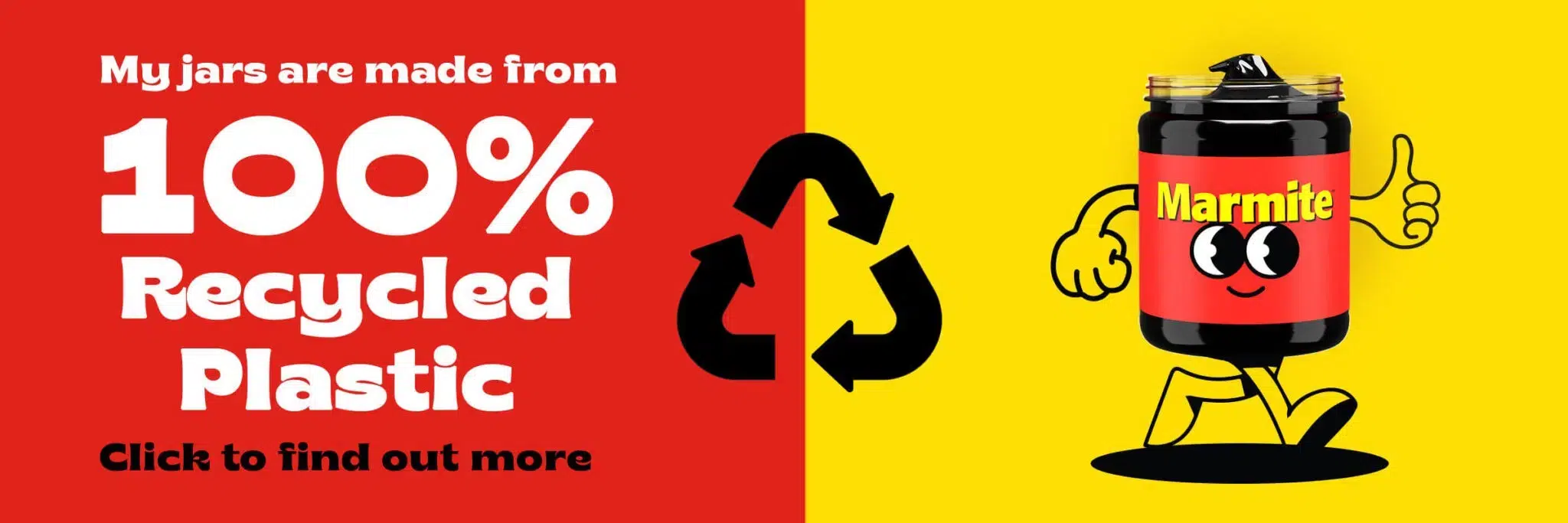
Equinox Hotels
Equinox Hotels blends fitness and luxury, targeting high-achievers seeking exclusivity. Their branding conveys a strong sense of belonging for the elite.
Through its graphics, interior design, and video, Equinox Hotels creates a holistic experience that leaves no doubt it’s not for the average person.
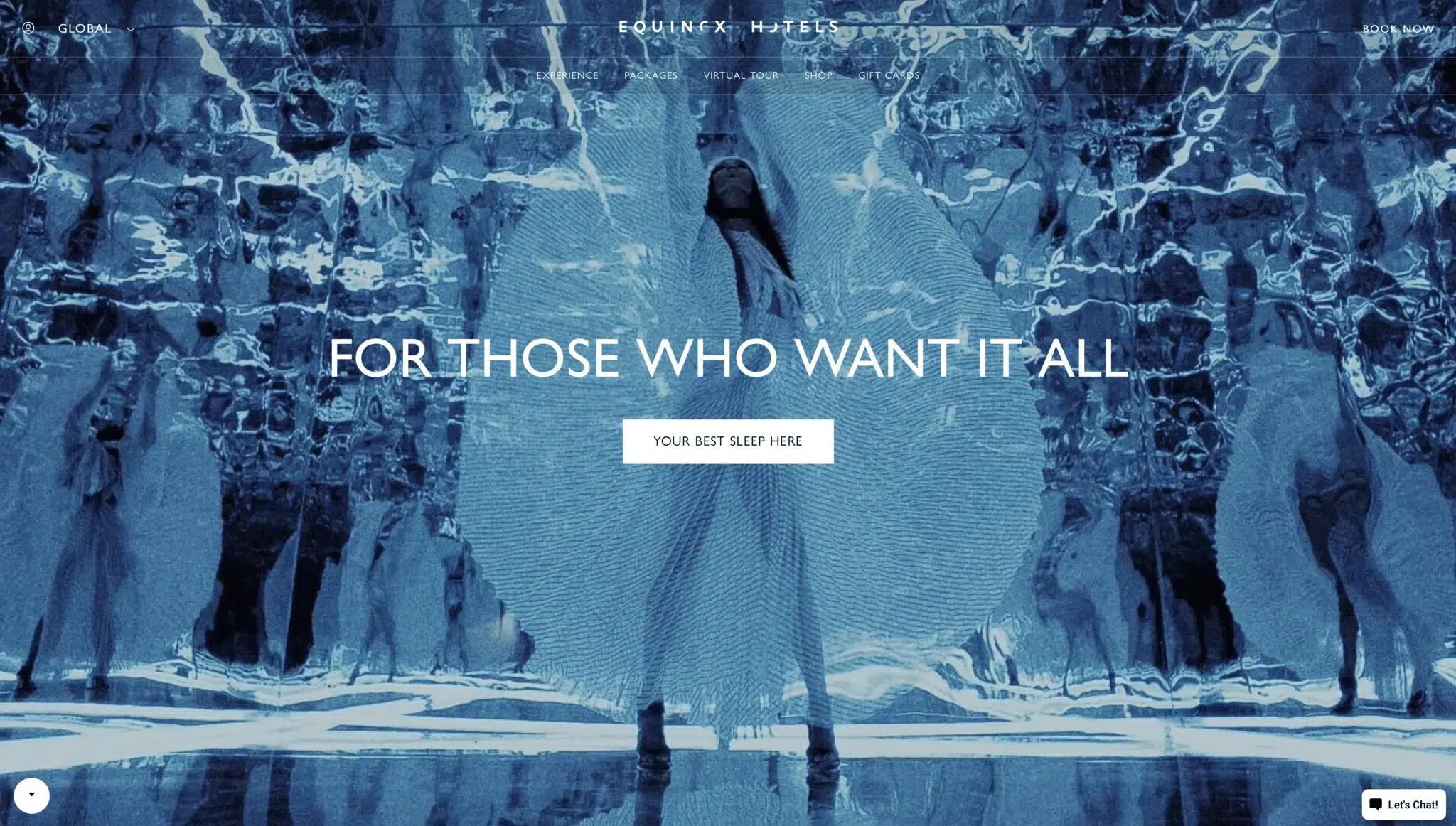
Figma
Figma’s B2B branding is all about collaboration and creativity and is aimed at a design-minded audience.
It conveys a feeling of imagination, playfulness, work-in-progress spirit with a touch of sophistication.
The animated illustrations create a dynamic and inviting atmosphere and appeal to people who feel “cool, young and creative”.
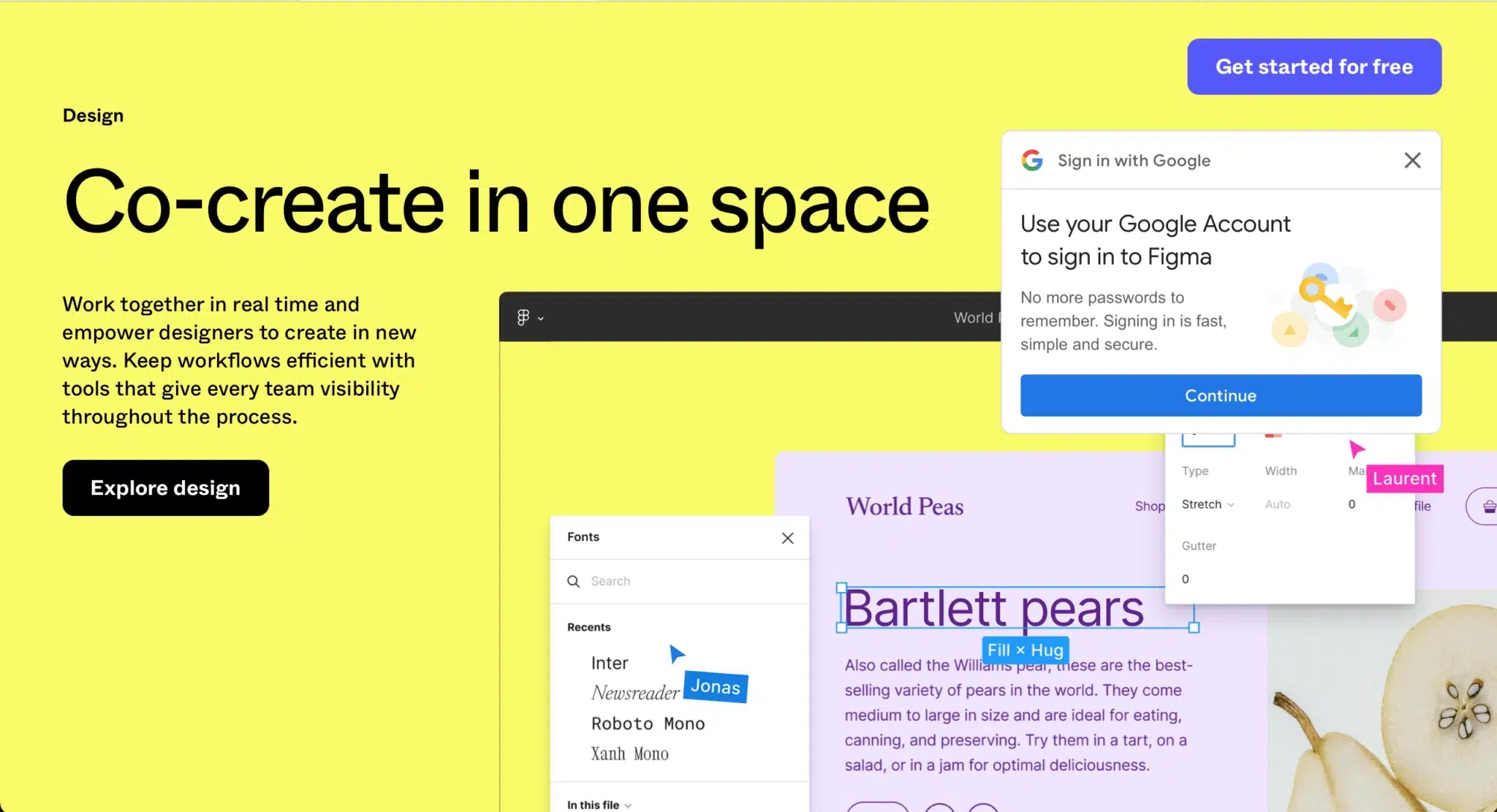
Henry Rose
Henry Rose creates clean and safe fragrances.
So, the company maintains a straightforward and transparent brand identity while incorporating vivid imagery to evoke a sense of sentiment.
This positions it as the preferred brand for those seeking transparency in fragrance ingredients and scents that evoke emotions.
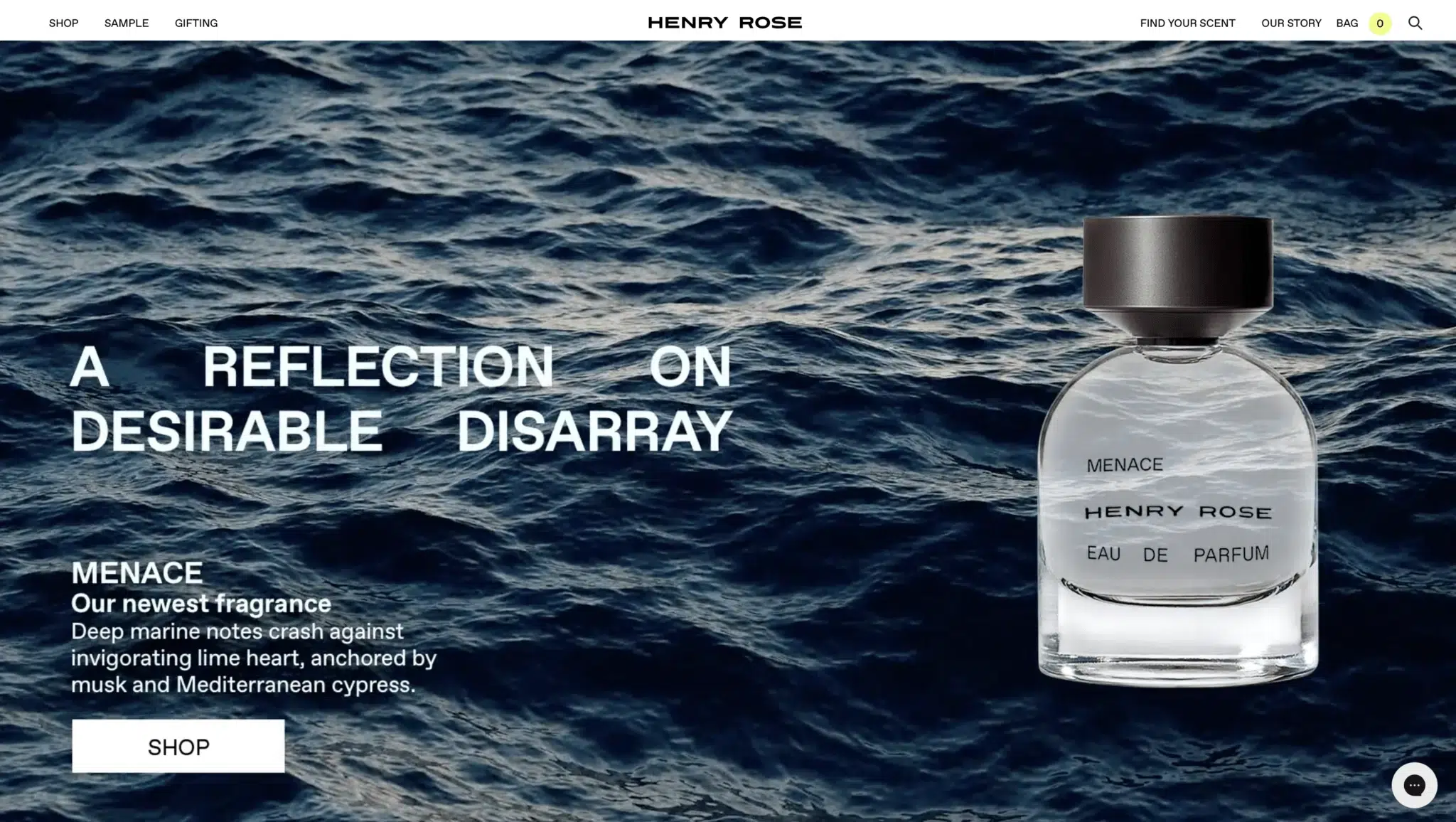
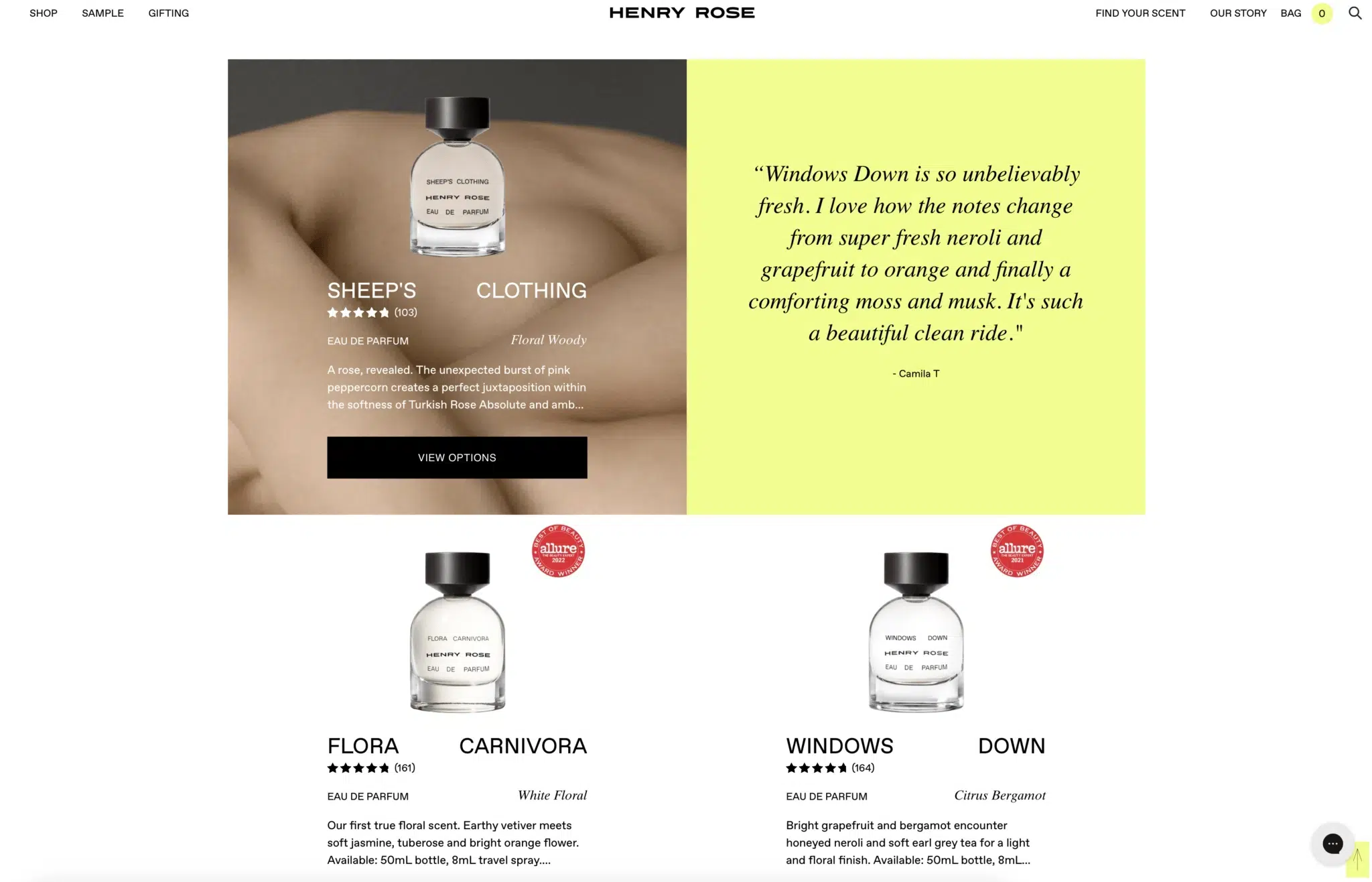
Liquid Death
Liquid Death is quite a famous example of what branding can do. It’s essentially just water.
However, the company’s edgy, rebellious branding appeals to consumers seeking more than hydration. They want a brand that mirrors their bold and unconventional style; perhaps they’re even looking for an alcohol substitute.
Liquid Death borrows visuals from the death metal scene, making its packaging look like beer cans. It also uses storytelling that questions the status quo. “Murder Your Thirst” says it all.
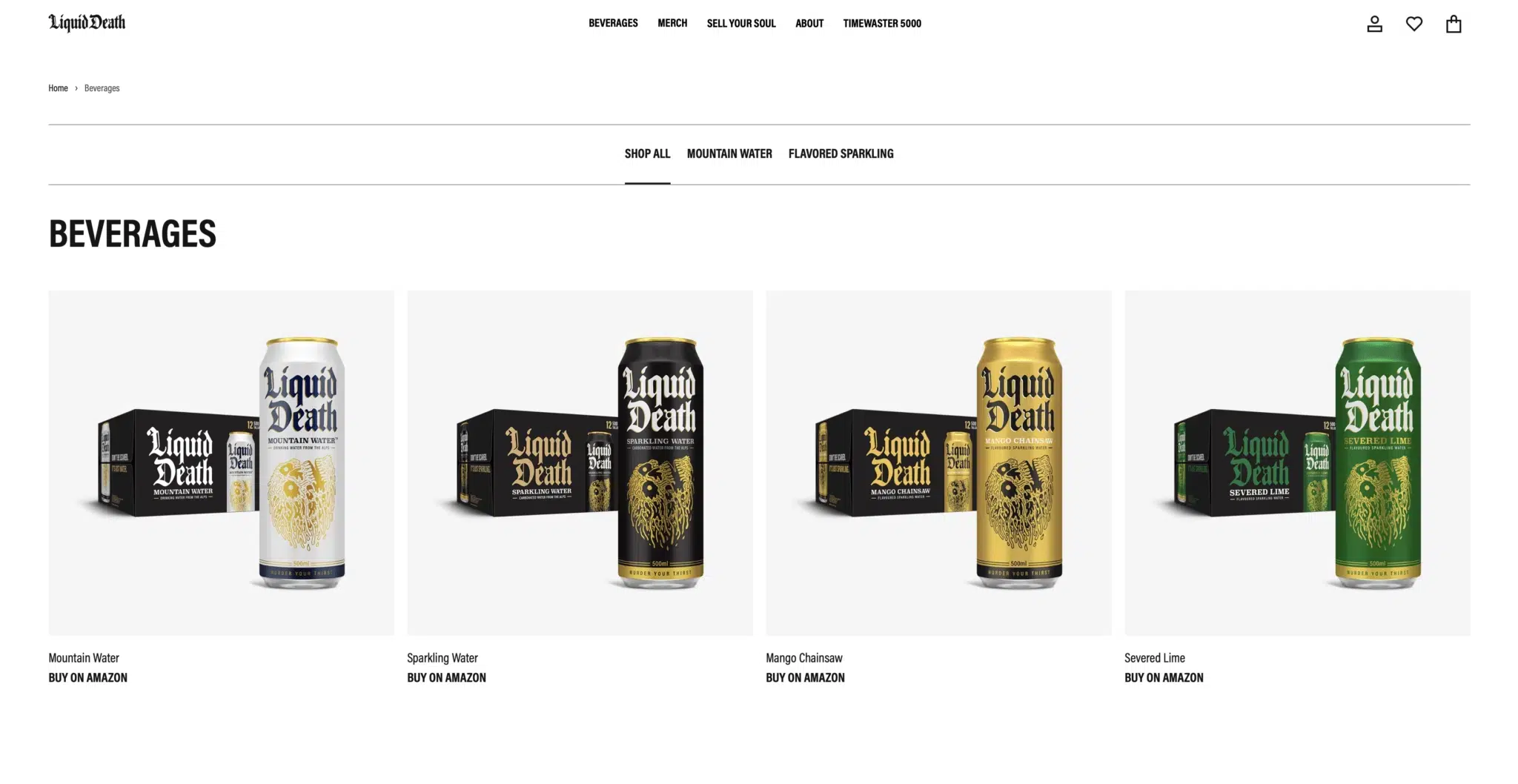
Future trends and predictions for branding
As technology evolves, so does branding. Staying ahead of the curve requires keeping a close eye on emerging trends.
Here’s a glimpse of what the future of branding may hold:
Purpose-driven brands
Brands that align with people’s values and contribute to social and environmental causes will thrive.
Sustainability in branding and eco-friendly initiatives will gain even more importance as environmental concerns grow.
I believe sustainability won’t longer be a distinguishing feature but a necessity.
Digital Branding
The future of branding will be digital, with a focus on immersive digital experiences.
AR and VR will be more prominent in creating immersive branded experiences. For example, IKEA already offers a VR app that lets customers visualise how furniture will look in their homes.
Personalisation is also gaining momentum. Brands are tailoring experiences and offerings to individual preferences.
In the future, brands could take what Amazon does now even further, using artificial intelligence, automation, and big data.
Data privacy
Data protection and ethical data usage will become top priorities for brands in response to growing concerns about data privacy.
Voice search
Optimising for voice search and integrating with intelligent assistants is another trend to watch out for.
Domino’s Pizza, for example, already offers voice-activated pizza ordering through platforms like Alexa.
Sensory branding
Sensory branding will become critical for brand recognition in a crowded digital landscape. Jingles, texture, and other multi-sensory elements can enrich brand identities.
Brand storytelling
Brand storytelling will continue to be used to connect with customers on a deeper level, and it may even evolve into new forms, such as virtual-reality interfaces or interactive AI-driven experiences.
Branding ressources
If you want to learn more about branding, you can find a list of branding resources here.
Summary
This deep dive into branding takes us from its ancient beginnings to today’s digital transformations.
It covers the history, definitions, types, and key steps of brand management. It also highlights examples of successful branding and future trends in this ever-evolving discipline.
Did you find this article helpful? I’d love to hear your feedback!
If you need help branding your company, drop me a line.
Title image by Kaboompics











